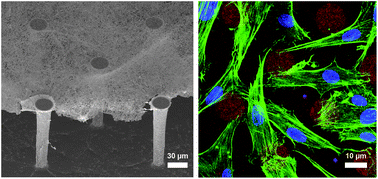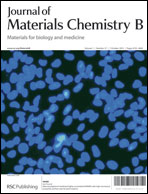Self-assembly of suspended collagen films and their viability as cell culture substrates†
Abstract
We present the fabrication and mechanical properties of thin collagen networks self-assembled in a suspended configuration over micropost arrays. These collagen “canopies” were formed on arrays of microposts made of PDMS, silicon, and vertically aligned


 Please wait while we load your content...
Please wait while we load your content...